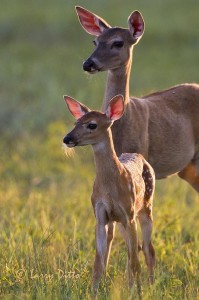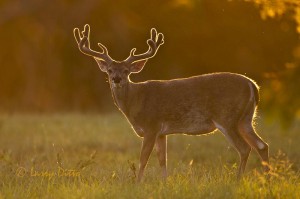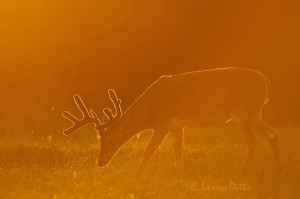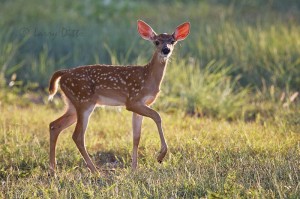We averaged about 101 degrees in McAllen this week; so we were one of the cooler spots in the state, but it was still too hot to get out much. Last Saturday, Paul Denman and I went to Corpus Christi to do a seminar for photographers participating in the Coastal Bend Wildlife Photo Contest. Then on Monday afternoon, I went to the Santa Clara Ranch with Beto Gutierrez, and we saw some beautiful bucks and does plus roadrunners, cardinals, pyrrhuloxias and black-throated sparrows. During most of this week, I just kept on culling and filing thousands of images from photo trips back in 2009 right up to the present.
In this newsletter, I want to show you a few deer photos from about ten days ago. Next week, we will consider butterfly photography. Both occasions presented challenges with difficult lighting…backlighting and mid-day shooting.
Remember, you can click on a photo to enlarge it and get a sharper image. Go forward or backward with a slide show by clicking in the upper right or left portion of the photo. That should reveal the “previous” and “forward” buttons.
The photographs above and below were taken in late afernoon as the light warmed enough for some very pleasing colors. The greatest challenge was that I couldn’t get between the deer and the sun for “over the shoulder” lighting most of us prefer. I had to shoot into the sun. Some photographers would have given up and gone home, but I love photographing backlighted subjects. So, I simply photographed these deer and adjusted my exposures to +1 or 1.5 f stops over the meter reading to open up the shaded side of the animals a little.
For animals with whiskers, fur, bushy tails or velvety antlers, I try to get positioned so that the sun shines onto fur or velvet to creat a highlight or rim light affect. Deer and rabbits are great subjects because they have those large, thin ears that turn pink when the light hits them from the back. With wild horses, it the long mane and tail that look so great when backlighted.




